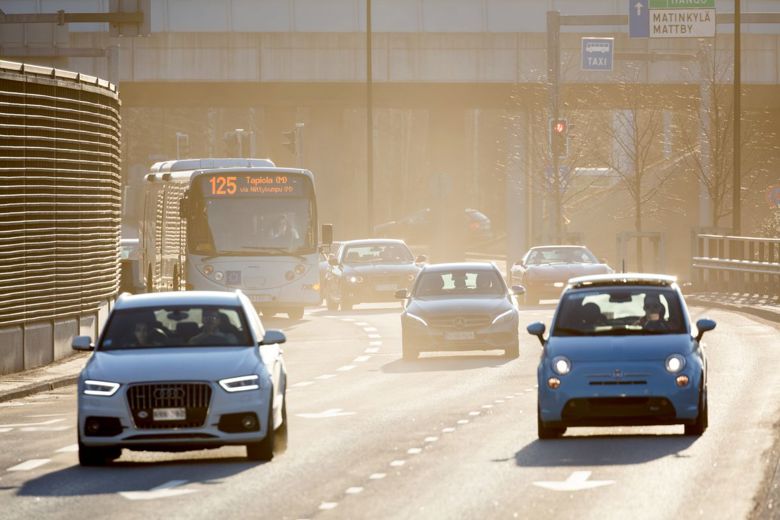Street dust reduces air quality

What is street dust?
Street dust concentrations in the air are usually at their highest in the spring. High dust concentrations sometimes also occur in the autumn and winter during the winter tyre season if the streets and roads are dry and free of snow. Construction sites can cause high dust concentrations in the surrounding area all year round.
During the winter, particulate matter accumulates on the streets from many different sources, resulting in dust in the air in the spring once the streets have dried, due to both traffic and wind. The streets are the dustiest on busy roadway sections. In this case, the daily concentrations of thoracic particles (PM10, particles smaller than 10 micrometres in diameter) may increase to more than ten times the average level. The timing and intensity of the street dust season in the spring varies from year to year, depending on weather conditions. The concentrations of fine particles (PM2.5, particles smaller than 2.5 micrometers in diameter) are less affected by the season, as only a small portion of street dust falls within the fine particle size range.
Dust can be curbed
We monitor the concentrations of thoracic particles at almost all of our monitoring sites, which mostly indicate the amount of street dust in the air from March through May. HSY as well as cities’ environmental services and street maintenance observe the concentrations and, where possible, take action to curb the amount of dust.
Spring cleaning of the streets removes street dust from road surfaces. Dust is also curbed by watering down the streets with a weak saline solution (calcium chloride) during the worst dusty days. Street dust is not a problem for large cities alone: high particle concentrations can also occur in small municipalities and urban areas.
Street dust is formed in the winter
A significant portion of the thoracic particles in the city air come from asphalt and ground grit pulverised under the tyres of cars. Studded tyres significantly wear the asphalt surface. Some of the dust is generated by the ground grit between friction or studded tyres and the road surface, wearing down the asphalt like sandpaper. On wet road surfaces, the asphalt wear caused by tyres is many times greater than on dry surfaces.
Ground grit travels from sidewalks and light traffic routes even to unsanded areas and driveways, which increases the formation of dust. Other sources of street dust include road salting, tyre and brake dust, braking sand for trams, soil from construction sites and natural environments, and plant residues and pollen pulverised on the streets. Street dust also contains microplastics from, for example, tyres or road markings. Fine particles also settle on the streets and mix with street dust.
Street dust rises into the air in the spring
Especially in the spring, street dust generated and accumulated during the winter rises into the air when the street surfaces dry off. Traffic flow and wind effectively lift the dust into the air in dry weather. Friction and studded tyres lift the dust on the streets into the air more strongly than summer tyres, and large vehicles stir up many more particles into the air than small cars. The air quality deteriorates and becomes particularly poor in the spring in dry and calm weather, when spring cleaning is still in progress.
Ways to reduce street dust
As a resident, you can do your part to prevent dust in the spring:
- Avoid unnecessary passenger car use.
- Choose friction tyres as your winter tyres.
- Change friction and studded tyres to summer tyres as soon as the weather permits.
- Avoid driving on the roadside in dusty areas.
- If you have a car, be sure to follow the signs requesting you to move your vehicle. Street cleaning is slowed down considerably if incorrectly parked cars have to be moved.
Ways properties can combat dust:
- Use washed and sifted, coarse ground grit for the winter maintenance of sidewalks, as it will cause less dust than sand in the spring.
- You can reduce the need for sanding during the winter by improving ploughing and snow removal.
- You can seek to encourage the proper handling of winter maintenance and spring cleaning in your own housing company.
- Sand should be cleaned from your own yard and sidewalk as soon as the weather permits.
- Ground grit should not be brushed onto a street that has already been cleaned.
- Sand should be removed when wet, and surfaces can be sprayed clean with water at the end.
- Leaf blowers must not be used for cleaning, as they effectively lift dust into the air.